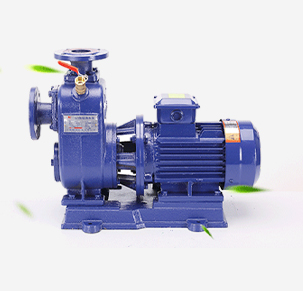TEL:
+86 13120555503
Esperanto
- Afrikaans
- Albanian
- Amharic
- Arabic
- Armenian
- Azerbaijani
- Basque
- Belarusian
- Bengali
- Bosnian
- Bulgarian
- Catalan
- Cebuano
- Corsican
- Croatian
- Czech
- Danish
- Dutch
- English
- Esperanto
- Estonian
- Finnish
- French
- Frisian
- Galician
- Georgian
- German
- Greek
- Gujarati
- Haitian Creole
- hausa
- hawaiian
- Hebrew
- Hindi
- Miao
- Hungarian
- Icelandic
- igbo
- Indonesian
- irish
- Italian
- Japanese
- Javanese
- Kannada
- kazakh
- Khmer
- Rwandese
- Korean
- Kurdish
- Kyrgyz
- Lao
- Latin
- Latvian
- Lithuanian
- Luxembourgish
- Macedonian
- Malgashi
- Malay
- Malayalam
- Maltese
- Maori
- Marathi
- Mongolian
- Myanmar
- Nepali
- Norwegian
- Norwegian
- Occitan
- Pashto
- Persian
- Polish
- Portuguese
- Punjabi
- Romanian
- Russian
- Samoan
- Scottish Gaelic
- Serbian
- Sesotho
- Shona
- Sindhi
- Sinhala
- Slovak
- Slovenian
- Somali
- Spanish
- Sundanese
- Swahili
- Swedish
- Tagalog
- Tajik
- Tamil
- Tatar
- Telugu
- Thai
- Turkish
- Turkmen
- Ukrainian
- Urdu
- Uighur
- Uzbek
- Vietnamese
- Welsh
- Bantu
- Yiddish
- Yoruba
- Zulu
Telephone: +86 13120555503
Email: frank@cypump.com
feb . 19, 2025 01:38 Back to list
ejector pump parts
Ejector pump systems are an essential component in many residential and commercial plumbing setups. These pumps are utilized to transport waste water and solid waste to a septic tank or sewer line, especially in configurations where gravity flow is not feasible. For individuals responsible for maintaining or repairing these systems, understanding the intricate details of ejector pump parts can greatly improve operational efficiency and system longevity.
The discharge pipe is another fundamental component, responsible for channeling the waste away from the pump to the intended disposal area. This part of the system must be free from obstructions, properly secured, and appropriately sized to handle the pump's capacity efficiently. Blockages or leaks in the discharge line can severely impact the system's effectiveness, emphasizing the need for periodic inspections and timely maintenance. One often overlooked but equally important component is the check valve. This valve prevents backflow into the pump, serving as a critical safeguard against system overload or damage to property. A malfunctioning or absent check valve can lead to reverse pressure conditions, potentially causing severe damage to the pump and associated plumbing. Regular inspection and testing of the check valve are vital to maintaining system integrity. For those responsible for servicing or installing ejector pumps, a comprehensive understanding of these parts and their roles can greatly enhance the effectiveness of maintenance and repair efforts. Investing in high-quality components, adhering to routine maintenance schedules, and staying informed about the latest technological advancements in ejector pump systems contribute significantly to the long-term reliability and performance of these essential systems. Furthermore, professional advice from experienced plumbing specialists can provide additional insights and recommendations tailored to specific system requirements and operating conditions. Leveraging expert knowledge not only ensures compliance with local codes and regulations but also maximizes the lifespan and functionality of ejector pump systems. For organizations and homeowners alike, prioritizing the quality and maintenance of ejector pump components ultimately safeguards property and enhances efficiency, justifying the investment and effort in optimizing these important systems.


The discharge pipe is another fundamental component, responsible for channeling the waste away from the pump to the intended disposal area. This part of the system must be free from obstructions, properly secured, and appropriately sized to handle the pump's capacity efficiently. Blockages or leaks in the discharge line can severely impact the system's effectiveness, emphasizing the need for periodic inspections and timely maintenance. One often overlooked but equally important component is the check valve. This valve prevents backflow into the pump, serving as a critical safeguard against system overload or damage to property. A malfunctioning or absent check valve can lead to reverse pressure conditions, potentially causing severe damage to the pump and associated plumbing. Regular inspection and testing of the check valve are vital to maintaining system integrity. For those responsible for servicing or installing ejector pumps, a comprehensive understanding of these parts and their roles can greatly enhance the effectiveness of maintenance and repair efforts. Investing in high-quality components, adhering to routine maintenance schedules, and staying informed about the latest technological advancements in ejector pump systems contribute significantly to the long-term reliability and performance of these essential systems. Furthermore, professional advice from experienced plumbing specialists can provide additional insights and recommendations tailored to specific system requirements and operating conditions. Leveraging expert knowledge not only ensures compliance with local codes and regulations but also maximizes the lifespan and functionality of ejector pump systems. For organizations and homeowners alike, prioritizing the quality and maintenance of ejector pump components ultimately safeguards property and enhances efficiency, justifying the investment and effort in optimizing these important systems.
Share
Next:
Latest news
-
Reliable Non-Clog Sewage Pumps with GPT-4-Turbo Tech
NewsAug.04,2025
-
High-Performance Air Pumps for Sand & Gravel | Efficient Transport
NewsAug.03,2025
-
ISG Series Vertical Pipeline Pump - Chi Yuan Pumps Co., LTD.|Energy Efficiency, Corrosion Resistance
NewsAug.03,2025
-
ISG Series Pipeline Pump - Chi Yuan Pumps | Energy Efficiency&Compact Design
NewsAug.03,2025
-
ISG Series Vertical Pipeline Pump - Chi Yuan Pumps Co., LTD.|High Efficiency, Low Noise, Durable
NewsAug.02,2025
-
ISG Series Vertical Pipeline Pump - Chi Yuan Pumps | High Efficiency, Low Noise
NewsAug.02,2025










